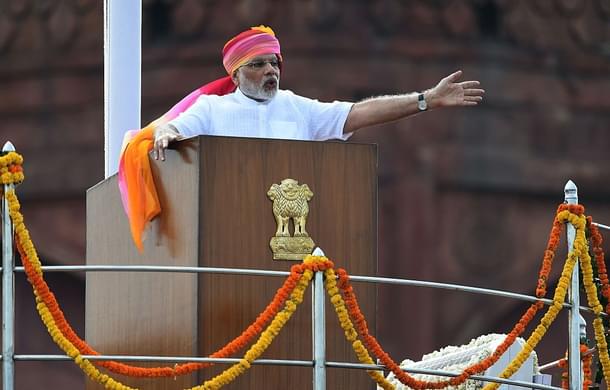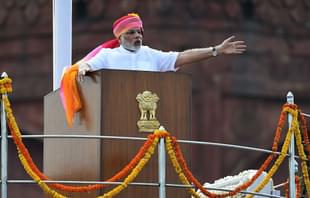Economy
Dear Mr Modi, PSUs Need To Be Divested, Not Turned Around
Seetha
Aug 17, 2016, 06:59 PM | Updated 06:59 PM IST
Save & read from anywhere!
Bookmark stories for easy access on any device or the Swarajya app.


A year or so back, as I headed up the steps to the entrance of the public sector Ashok Hotel in Delhi, I was faced with the unedifying sight of a hotel functionary tasked with greeting guests with a namaste scratching his crotch.
Ten days back, I was booked on an Air India flight and wanted to reserve extra leg room seats in advance. But I could not because Air India takes payment only through ICICI Bank debit cards or any other credit card. I do not have a credit card, had debit cards of two public sector banks and was prepared to do an Internet banking transaction. I have used these two routes to reserve seats in private airlines. But I cannot in Air India.
At Rs 3,60,277 crore (as of December 2015), non-performing assets of public sector banks are just short of 10 times those of private sector banks (Rs 38,396 crore). And because public sector banks account for 70 percent of the banking system, they imperil the health of the entire economy.
So when Prime Minister Narendra Modi sneered at how past governments have dealt with the public sector and boasted about how his government had turned around three basket cases – Air India, Bharat Sanchar Nigam Limited (BSNL) and Shipping Corporation of India – there was a sense of dread. Why is the government wasting taxpayers’ money and its energies in areas where the private sector can do (and is doing) a much better job?
Besides, how does this chest-thumping square with his speech in January 2015 when he said governments should not be in business and should deal with only five things? Was it meant to just pander to a particular constituency, as his detractors gleefully point out?
How does this also square with his espousal of su-raaj (loosely translated as good governance) in the same Independence Day speech? How can su-raaj be possible when the government’s financial and manpower resources are frittered away in running businesses ranging from heavy and light engineering to airlines to hotels to pharmaceuticals, even as basic policing and physical and social infrastructure provision sucks?
And finally, what does this mean for the NITI Aayog’s proposals for strategic sale of several public sector undertakings (PSUs), revival before strategic sale of 22 and immediate closure/winding up of another 26? The NITI Aayog was tasked by the government to do this. Was this again all about optics?
Mixed signals and misplaced priorities seem to mark this government’s public sector policy.
It was not the desire to be flippant that prompted the mention of the anecdotes at the start of the article. The anecdotes underscore a very basic point – there are things governments just cannot do, running businesses is one of them. The Modi government’s preference for the United Progressive Alliance’s (UPA) public sector policy over that of the first National Democratic Alliance (NDA) is flawed and needs a rethink.
As R Jagannathan has pointed out, Air India making operational profit does not mean very much. The same goes for BSNL too. Over the years, a lot of time, money and effort have been spent on trying to resurrect ailing PSUs and make them profitable. They have never worked.
The UPA also set up the Bureau for Revival of Public Sector Enterprises – it had little to show by way of success. The number of loss-making PSUs went up from 63 to 77 in 10 years and losses stand at Rs 26,904 crore as of 2014-15. This will invite the counter that the Modi government will be more efficient and any revival package it takes up will be successful.
But there are inherent systemic rigidities that make it difficult for the public sector to be customer-focussed and efficient, or even respond to market developments nimbly. The Fourteenth Finance Commission put it very aptly:
“The structure of public sector enterprises has inherent limiting factors that reduce their capacity to be competitive... the monitoring and multi-layered oversight mechanisms as well as the assigned monopoly and protected status... restrict the development of a competitive culture.”
Take Air India. As this article points out, the modest operation profit that Air India made came mostly from benign fuel prices and earnings from sale and leaseback services, not from improved efficiencies. It also shows that on operational parameters, Air India lagged behind its private sector counterparts.
Ashok Hotel cannot sack a crotch-scratching doorman. A public sector bank chief cannot refuse to sanction a loan to a dodgy businessman if the minister wants him to. (This government says it has changed this culture, but the jury is still out on this.) The head of a public sector manufacturing firm cannot take commercial decisions purely on merit, but will have to worry about Section XX of the Prevention of Corruption Act, which can hold him liable for merely taking a decision, which benefits a private party, even if he did not take a bribe.
Look at the list of profit-making public sector companies – they are mostly in areas of government monopoly or dominance. Look now at the 77 loss-making ones – they are mostly in areas, where the private sector has a robust presence.
More importantly, the government has better uses for its time, money and personnel. Close to Rs 2.19 lakh crore government investment is locked up in nearly 230 central PSUs as of 2015. The dominant majority of these PSUs are not engaged in providing public goods – which should be the only criteria for the government to provide a good or service. Public sector presence may also be considered acceptable in strategic areas. But there can be no case for the public sector in all other manufacturing and service areas. Government money should be spent on roads, electricity, water supply and sanitation, more policemen, more judges, running costs in the case of hospitals and primary health centres.
There is little point in constantly attacking the Nehru-Gandhi dynasty and trying to obliterate it from public memory and then continuing with the bad parts of its legacy. Unfortunately, on the question of the public sector, the Modi government is not only happily running down the same path, but is also boasting about it. The Nehruvian emphasis on public sector had a particular context. That context no longer exists. That policy also needs to change.
Seetha is a senior journalist and author




